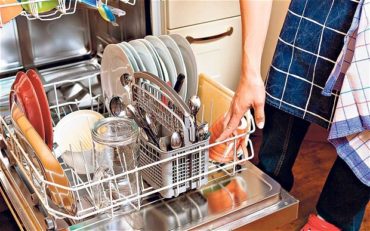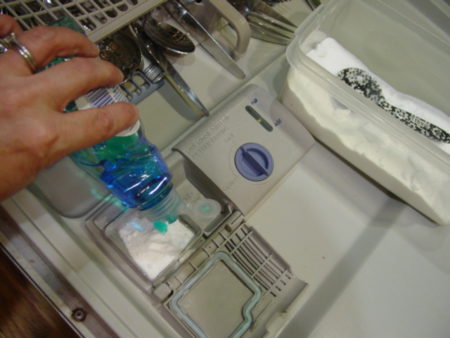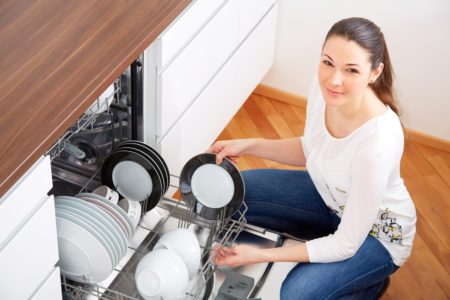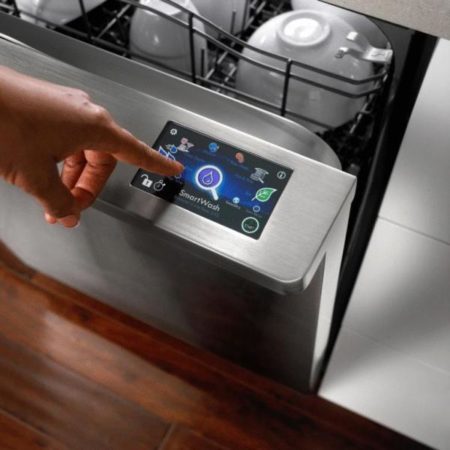 The long-awaited purchase of a dishwasher from Bosch or another company is far from an ordinary event for many, but a very expected one. Especially among those housewives who have a large family, where a lot of food accumulates. However, bachelors also rejoice at this household appliance, as a salvation from the hated occupation - washing dishes.
The long-awaited purchase of a dishwasher from Bosch or another company is far from an ordinary event for many, but a very expected one. Especially among those housewives who have a large family, where a lot of food accumulates. However, bachelors also rejoice at this household appliance, as a salvation from the hated occupation - washing dishes.
Then the day came when the dishwasher was brought in, the masters from the service center plugged it in, then the front door closed behind them, and you were left alone with the dishwasher, who seemed to whisper that soon it would be possible to forget about the painful washing by hand, then press start. But what to do next? How to properly run the dishwasher for the first time at home?
There are no special secrets here, you just need to adhere to the operating rules described in the instructions for the household appliance, and also observe a number of unspoken rules, which we will talk about a little later.
Switching on the dishwasher for the first time
 Before the first start-up of any household appliance, be it Bosch or Siemens, it is necessary to read the instruction manual, where the manufacturer prescribes recommendations and instructions for this case.
Before the first start-up of any household appliance, be it Bosch or Siemens, it is necessary to read the instruction manual, where the manufacturer prescribes recommendations and instructions for this case.
As a rule, the mechanics of actions before the first switching on and starting is as follows:
- make sure that the machine does not have any damage after transportation or third-party items, for example, foam sealing spacers or stickers inside;
- dishes must not be put on during the first start, it must be idle;
- pour ionic salt, it is also a water softener, into a special compartment or make sure that it is there from the factory;
- set a medium temperature setting, then a washing program of medium duration.
![]() See also - Dishwasher salt: where to put it and why
See also - Dishwasher salt: where to put it and why
Such simple steps will allow you to start up the dishwasher and prepare it for further productive use.
Many are perplexed why it is impossible to immediately put dishes in the dishwasher and press the start, so as not to drive the mechanism in vain. Everything is simple here, the first washing cycle is carried out in order to wash out technical lubricants and other unnecessary substances that remained in the tank after assembly at the factory. Getting them on kitchen utensils will certainly not bring anything good, so it is better not to skimp and do everything according to the rules before the first launch.
Loading the dishes correctly
 Loading the dishwasher seems like an easy task, doesn't it? Just place the dishes, add detergent, start and you're done. However, if this is the case, then why are we all often forced to rewash the dishes because they were not completely cleaned?
Loading the dishwasher seems like an easy task, doesn't it? Just place the dishes, add detergent, start and you're done. However, if this is the case, then why are we all often forced to rewash the dishes because they were not completely cleaned?
Here's how to load your dishwasher correctly to turn it on for maximum efficiency and maximum cleaning power:
- remember that you must always start loading the dishwasher from the bottom;
- place lighter, fragile objects, various corks on top, put the caps in a special compartment for spoons;
- if there is a need to wash something overall, you can remove one of the stands;
- there should always be large kitchen appliances below;
- be sure to leave gaps between the dishes in the sink so that a jet of water can wash them;
- be sure to clean the plates of large food debris, otherwise they will clog the filter very quickly.
![]() See also - How to arrange the dishes in the dishwasher
See also - How to arrange the dishes in the dishwasher
Selecting a washing program
 The correct start-up of the dishwasher requires the correct selection of the dishwashing program.
The correct start-up of the dishwasher requires the correct selection of the dishwashing program.
Of course, each manufacturer in their models can call these programs differently, as well as change their number. But, as a rule, the standard set of basic programs for all dishwashers is similar.
![]() See also - How long does the dishwasher wash
See also - How long does the dishwasher wash
Pre-wash or soak function
This mode is used when the dishes to be washed are very dirty. This definition includes pans with burnt food, or very fatty cauldrons, as well as other kitchen utensils that are difficult to clean.
High-intensity washing program
This mode offers the possibility to wash even very dirty cutlery without presoaking. It works at high temperatures, so if you do not have heat-resistant cookware, treat it with care.
Standard program
Standard washing is the most common and frequently used mode among household dishwashers, as it allows you to wash the dishes at the optimal cost of energy and water, guaranteeing a good result.
Economical washing
This mode consumes very little light and water, as it is not difficult to guess from the name, but it should be used only for very slightly soiled kitchen utensils, otherwise the result may be upset.
Delicate program
This mode is used to wash thin and fragile sets.
Quick wash
Allows you to quickly wash the dinner service without drying it out. When washing heavily soiled dishes, the result may not be good.
Summing up a small summary, we note that the first launch of the dishwasher is very important for the further fruitful and long-term operation of the dishwasher, so that it will last a long time, delighting the owners with clean plates and pots.
![]() See also - How and what to replace dishwasher tablets
See also - How and what to replace dishwasher tablets


Nice girl Anastasia tells in detail and intelligibly how to handle the dishwasher. In general, everything is clear. I would like to make some small comments. She repeats the word many times; dishwasher ", but she says it indistinctly, somehow" chews "it, especially at the very beginning. And the second thing. Words: "stuck together" do not exist in Russian. And there is the word “stuck together”. Please take this into account.